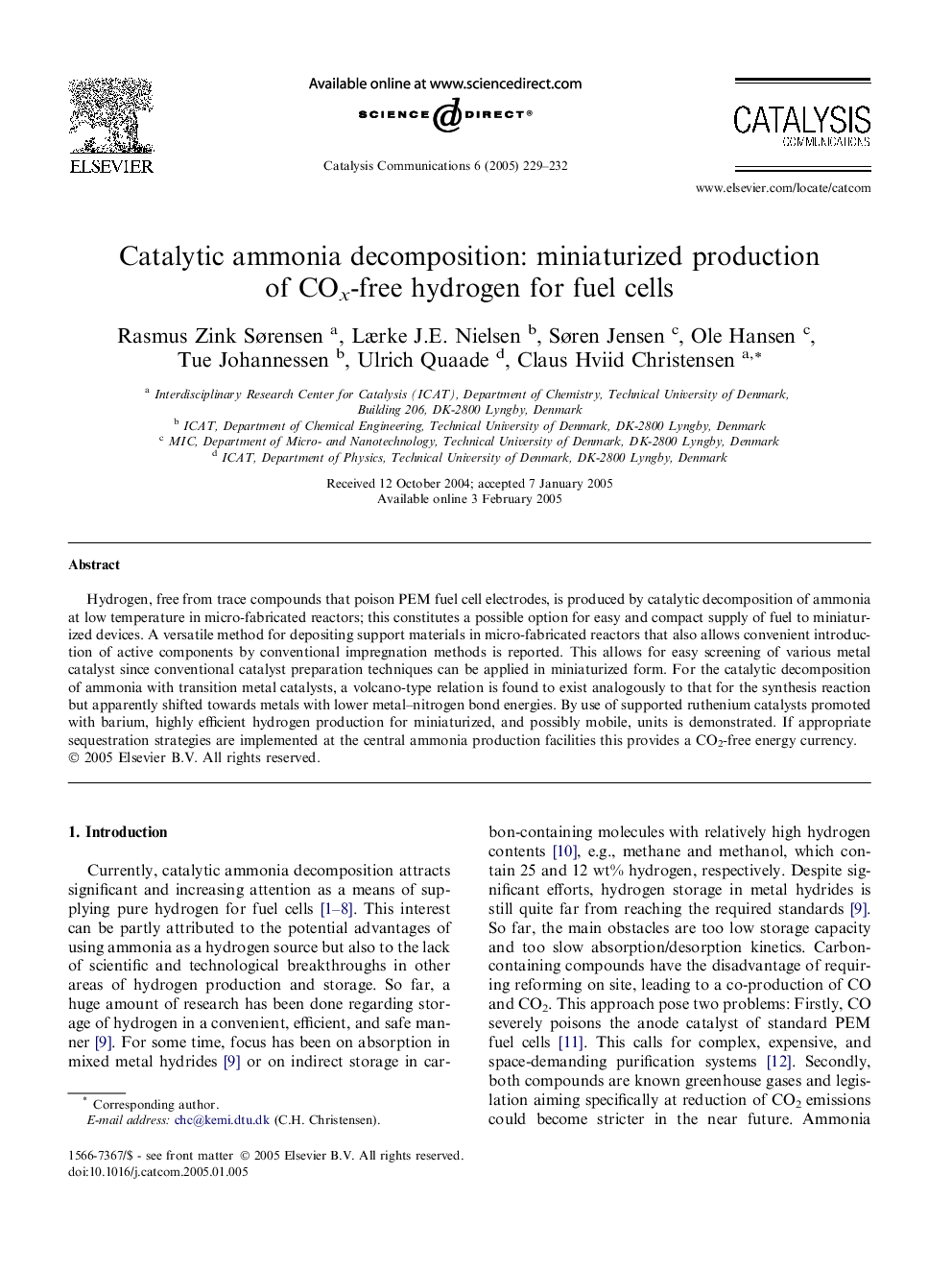| Article ID | Journal | Published Year | Pages | File Type |
|---|---|---|---|---|
| 10242920 | Catalysis Communications | 2005 | 4 Pages |
Abstract
Hydrogen, free from trace compounds that poison PEM fuel cell electrodes, is produced by catalytic decomposition of ammonia at low temperature in micro-fabricated reactors; this constitutes a possible option for easy and compact supply of fuel to miniaturized devices. A versatile method for depositing support materials in micro-fabricated reactors that also allows convenient introduction of active components by conventional impregnation methods is reported. This allows for easy screening of various metal catalyst since conventional catalyst preparation techniques can be applied in miniaturized form. For the catalytic decomposition of ammonia with transition metal catalysts, a volcano-type relation is found to exist analogously to that for the synthesis reaction but apparently shifted towards metals with lower metal-nitrogen bond energies. By use of supported ruthenium catalysts promoted with barium, highly efficient hydrogen production for miniaturized, and possibly mobile, units is demonstrated. If appropriate sequestration strategies are implemented at the central ammonia production facilities this provides a CO2-free energy currency.
Related Topics
Physical Sciences and Engineering
Chemical Engineering
Catalysis
Authors
Rasmus Zink Sørensen, Lærke J.E. Nielsen, Søren Jensen, Ole Hansen, Tue Johannessen, Ulrich Quaade, Claus Hviid Christensen,
